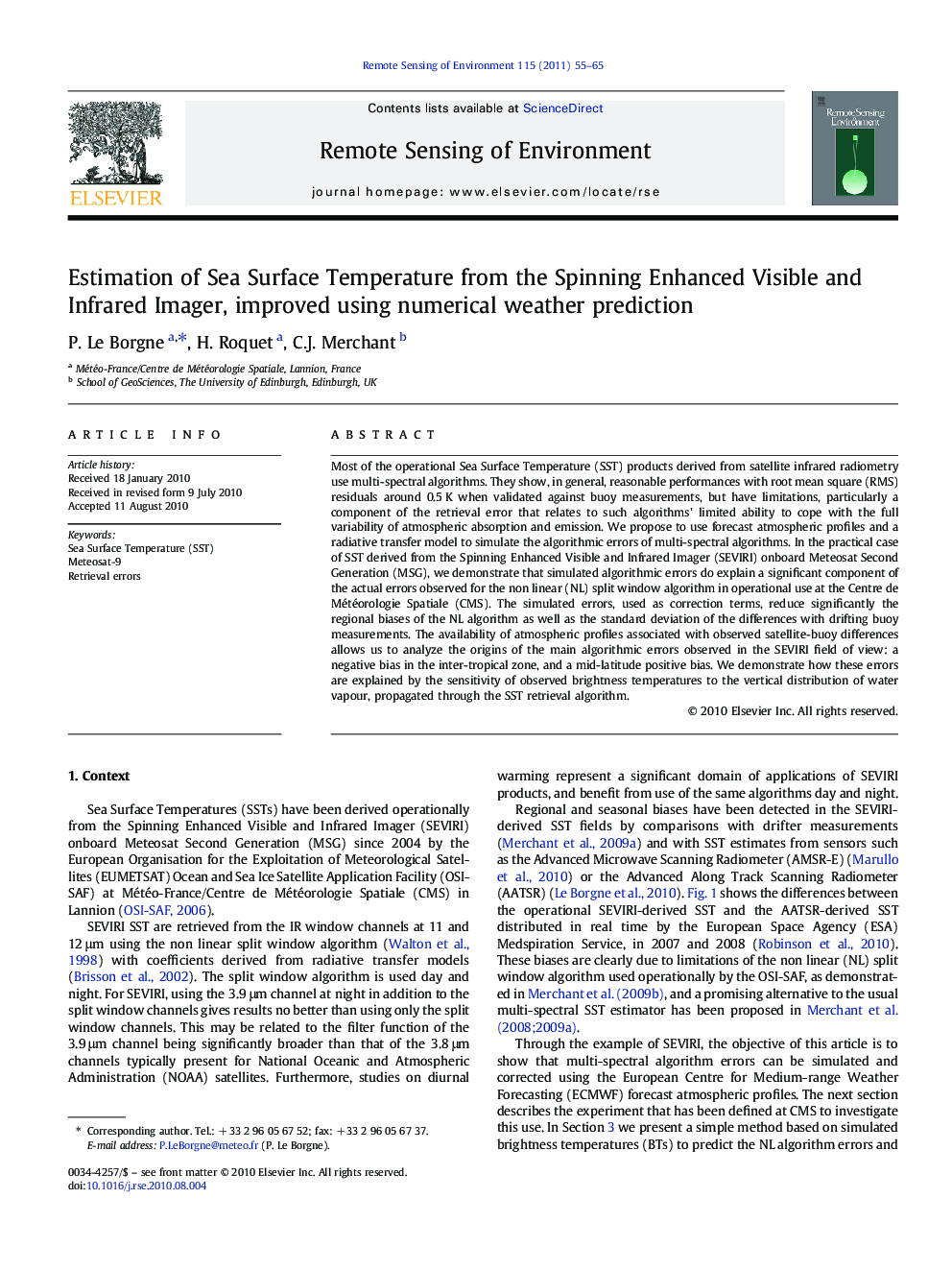| Article ID | Journal | Published Year | Pages | File Type |
|---|---|---|---|---|
| 4459405 | Remote Sensing of Environment | 2011 | 11 Pages |
Most of the operational Sea Surface Temperature (SST) products derived from satellite infrared radiometry use multi-spectral algorithms. They show, in general, reasonable performances with root mean square (RMS) residuals around 0.5 K when validated against buoy measurements, but have limitations, particularly a component of the retrieval error that relates to such algorithms' limited ability to cope with the full variability of atmospheric absorption and emission. We propose to use forecast atmospheric profiles and a radiative transfer model to simulate the algorithmic errors of multi-spectral algorithms. In the practical case of SST derived from the Spinning Enhanced Visible and Infrared Imager (SEVIRI) onboard Meteosat Second Generation (MSG), we demonstrate that simulated algorithmic errors do explain a significant component of the actual errors observed for the non linear (NL) split window algorithm in operational use at the Centre de Météorologie Spatiale (CMS). The simulated errors, used as correction terms, reduce significantly the regional biases of the NL algorithm as well as the standard deviation of the differences with drifting buoy measurements. The availability of atmospheric profiles associated with observed satellite-buoy differences allows us to analyze the origins of the main algorithmic errors observed in the SEVIRI field of view: a negative bias in the inter-tropical zone, and a mid-latitude positive bias. We demonstrate how these errors are explained by the sensitivity of observed brightness temperatures to the vertical distribution of water vapour, propagated through the SST retrieval algorithm.
